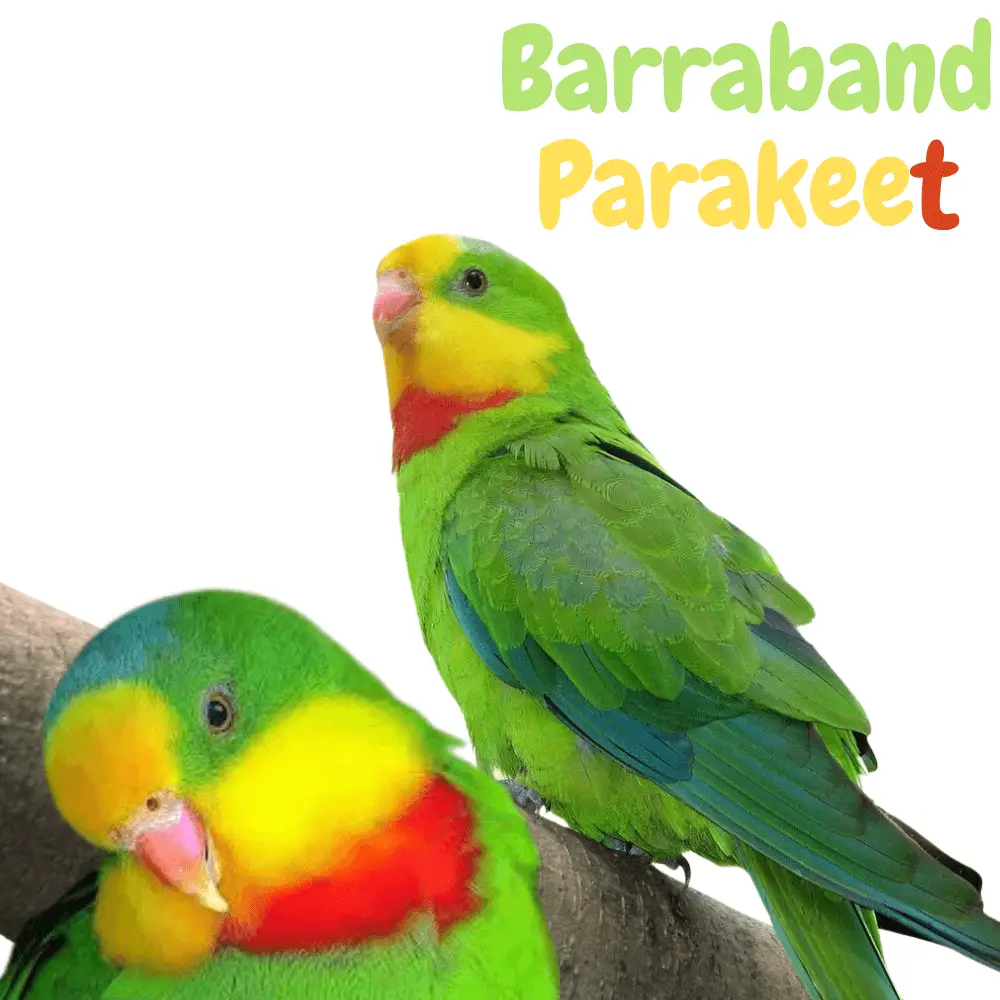
Barraband’s Parakeet The Barrabands Common name: Barra band’s Parakeet Scientific and systematic name: Polytelis swainsonii
- Order : Psittaciformes
- Family: Psittacidae
- Genre: Polytelis
- Species: swainsonii
Physical description
Barrabands are about 40-45 cm long and weigh around 150 grams.
The male has green plumage and a pinkish-red beak. It has a yellow, red, and blue mask. Indeed, the forehead is yellow up to half of the hood while the posterior part of the cap and the nape is tinged with blue. A wide red band surrounds the front of the neck. The rest of its body is green. The underside of the tail, on the other hand, is black, sometimes underlined with pink bands.
Sexual dimorphism is important. The females are completely green except for the slightly bluish-gray face and the thighs which are reddish like the underside of the tail. They may present a light discreet reddish collar. The juveniles remain green and are then similar to their mother until their sexual maturity (2-3 years) when the young males acquire their yellow mask.
Distribution and habitat
A species endemic to Australia, and more particularly to the southeast of the continent, Barraband parakeets live in areas of eucalyptus, close to rivers. They are observed in wooded areas, slightly humid but also near agricultural and grazing plots.
Longevity
The life expectancy of about fifteen years, see up to 30 years in captivity…
Behavior in the wild and in captivity
In the wild, they are partly migratory in connection with the flowering of Eucalyptus. The rest of the year, we observe small groups not exceeding 100 individuals.
Barraband parakeets are particularly calm and sociable in captivity. Very endearing and social parakeet.
Songs and vocals
Barrabands are very quiet birds and their few vocals are pleasing.
The following link provides several audio recordings
Feed
In its natural state, the diet of this species consists mainly of various wild seeds such as sunflower, millet, or cultivated cereals. In addition to this, they also feed on fruits, berries, buds, or even flowers.
In captivity, the types of diets are varied: seeds, extrudates, fruits, and vegetables… For more information on adequate nutrition, I advise you to refer to the corresponding articles!
Reproduction
In the wild, nesting sites are selected based on the abundance of food resources, as with most species. Thus, Barraband’s parakeets nest in areas rich in cypresses and acacias which have good yields of buds and fruits.
The breeding season extends from September to November. Barrabands, like most Australian parakeets, lay about 3 to 6 eggs, one every two days. Incubation lasts 21 days on average, by females alone. She can start hatching from the second or third egg laid. The young will leave the nest at the age of 5 weeks and will be fully weaned around 8 weeks of age. Moreover, sexual maturity is reached at the age of 2-3 years, consistent with the appearance of the yellow mask in the male.
The threat, protection status, and detention
Barraband parakeets are not considered an endangered species. The world population, however, does not exceed 5,000 mature individuals. It is also declining due to habitat degradation and poaching. This species, which was not very popular in farms, was then protected by the Washington Convention, Appendix II/B. This species is classified as “least concern” according to its IUCN conservation status. A dozen conservation reserves have been created to date.




















